 November 4, 2021 John E. Ross, KD8IDJ, Editor
| ||||||
ARISS Receives Generous ARDC Grant for ARISS STEREO Education Project Best known for arranging amateur radio contacts between students and astronauts, Amateur Radio on the International Space Station (ARISS) has announced that it's received a generous grant to fund its "Student and Teacher Education via Radio Experimentation and Operations" (STEREO) project. The 5-year Amateur Radio Digital For Part 1 of the project, ARISS is developing a wireless electronics technology kit called "SPARKI," or "Space Pioneers Amateur Radio Kit Initiative," for use with middle and high school students. This ARDC grant will take SPARKI from prototype to operational phase. ARISS would then deploy these kits among a selected set of formal and informal education organizations that are planning future ARISS radio contacts. In Part 2 -- "Educate the Educator," ARISS will conduct educator workshops for a selected set of educators to help them seamlessly employ SPARKI in their education environment and allow ARISS to receive their feedback and ideas. To be successful, ARISS must create awareness of amateur radio, ARISS, and SPARKI among prospective formal and informal educators.
For Part 3, over its 5-year lifetime, the grant will also support some of the many costs involved with ARISS contact operations between students and astronauts aboard the ISS. ARISS-USA Executive Director Frank Bauer, KA3HDO, said ARISS is extremely excited about the new 5-year initiative. "It will be a STEAM education game-changer and represents a key element of our ARISS 2.0 vision," Bauer said. "Most importantly, it brings wireless technologies and amateur radio into our ARISS formal and informal classrooms. We thank ARDC for their interest and support and look forward to working with them on this incredible initiative." ARDC's mission is to support, promote, and enhance digital communication and broader communication science and technology, to promote amateur radio, scientific research, experimentation, education, development, open access, and innovation in information and communication technology. ARDC grants target projects and organizations that follow amateur radio's practice and tradition of technical experimentation that has led to broad advances for the
benefit of the public. These include mobile phone and wireless internet technology. ARDC envisions a world where technology is available through open-source hardware and software, and where anyone has the ability to innovate upon it. In the last 2 decades, more than 1,400 ARISS ham radio contacts have connected more than a million students using amateur radio with millions of others watching, listening, and learning. ARISS is constantly pursuing opportunities to enhance and sustain its educational capabilities and outcomes. Amateur Radio Emergency Service and SKYWARN Respond to Major Nor'easter A major nor'easter struck eastern Massachusetts and Rhode Island last week, with ferocious winds stronger than those that Tropical Storm Starting on the evening of October 26, eastern Massachusetts amateur radio operators on the Amateur Radio Emergency Service (ARES®) and National Weather Service (NWS) SKYWARN⢠storm spotter teams joined forces to help emergency services provide a focused and effective response as the powerful nor'easter caused widespread damage. Tree and wire damage, trees falling on homes and cars, and a few cases of direct structural damage to weakened structures were reported. "We have handled several hundred reports of damage, and photos of damage are streaming in from ARES and SKYWARN operators to support damage assessment efforts and to keep the NWS in Norton apprised of the severe weather conditions affecting the region," said Rob Macedo, KD1CY, Eastern Massachusetts ARES Section Emergency Coordinator and ARES-SKYWARN Coordinator for NWS Boston/Norton.
ARES-SKYWARN operators relayed reports of hurricane-force wind gusts reaching 94 MPH in Edgartown, Massachusetts, at Chappy Ferry Point; 84 MPH in Dennis, Massachusetts; 79 MPH in Sandwich, Massachusetts, and 78 MPH in Rockport, Massachusetts. Amateur operators with WX1BOX, the amateur radio station at NWS Boston/Norton; Cape Cod ARES and SKYWARN, and South Coast SKYWARN completed overnight operations, when the peak winds occurred. "The dedication of our volunteers to provide this critical information in a major storm like this one to the NWS, media, and emergency managers during such a grueling stretch is very critical to inform people what is happening during such a significant storm when they wake up in the morning, so they will hopefully make safe decisions to avoid being out in a significant severe wind situation," Macedo said. Cape Cod ARES was activated by the Barnstable County Regional Emergency Planning Committee (BCREPC) to staff the Multi-Agency Coordination Center (MACC) at the Barnstable County Emergency Operations Center (EOC). Cape Cod ARES MACC support concluded on October 29 after a round-the-clock effort. According to the Cape Cod and Islands ARES District Emergency Coordinator Frank O'Laughlin, WQ1O, "Damage assessments in the region will give us a better sense of how long it will take to restore power and in some cases communication service to the Cape [Cod] and Islands area, and that will determine how long Cape Cod ARES Macedo called the nor'easter "one of our more extraordinary weather systems within the last few years, and the most severe of several other major SKYWARN/ARES activations in this past year." SKYWARN damage reports and meteorological data are shared with state emergency management, NGOs, and the media. Meteorologist Kevin Lemanowicz of Boston 25 News said, "Thanks for all the effort! Great work as always!" As many as 500,000 customers lost power in the ARRL Eastern Massachusetts Section, with hardest-hit areas in southeastern Massachusetts, Cape Cod and the Islands, and the Cape Ann area north of Boston, where near hurricane-force wind gusts pummeled the region for several hours. Maximum winds were up to 65 MPH. Rhode Island reported nearly 93,000 customers without power at the peak. These outages were an order of magnitude greater than during Tropical Storm Henri in Rhode Island, and about five orders of magnitude more severe than Henri in Massachusetts. Storm conditions wound down toward the evening of October 27, allowing the process of more widespread power restoration to begin. All operations secured and power was restored to most locations on October 30 and to all locations on October 31. -- Thanks to Rob Macedo, KD1CY. ARRL Podcasts Schedule
The latest edition of Eclectic Tech (Episode 46) features a discussion about Beverage antennas with Ward Silver, N0AX. The On the Air and Eclectic Tech podcasts are sponsored by Icom. Both podcasts are available on iTunes (iOS) and Stitcher (Android) as well as on Blubrry -- On the Air | Eclectic Tech. The 2022 ARRL Handbook for Radio Communications is Now Available The ARRL Handbook for Radio Communications for 2022 is a must-have for every radio amateur's bookshelf. Whether you're an experienced ham or new to the hobby, you'll find information you can use to advance your amateur radio knowledge and skills. This current, The 2022 edition features new projects and tools, including 3D printing techniques for ham radio construction, battery selection for portable operation, analog-to-digital converter overload, solid-state amplifier linearity, an update on Solar Cycle 25, and more. The Handbook six-volume book set, ARRL Item No. 1519, ISBN 978-1-62595-151-9, is $59.95 retail. The Handbook softcover book, ARRL Item No. 1502, ISBN 978-1-62595-150-2, is $49.95 retail. More new books have also just been stocked in the ARRL Store, including the second edition of Grounding and Bonding for the Radio Amateur by Ward Silver, N0AX. This new edition shows you how to make sure your station follows current standards for lightning protection and RF grounding. It details effective grounding and bonding techniques for the home, portable or mobile station, as well as for towers and antennas. Also just out: More Arduino for Ham Radio by popular author and experimenter Glen Popiel, KW5GP, introduces many of the new Arduino boards and add-on modules, followed by an overview of the software, tools, and techniques needed to bring projects to life. Practical projects showcase a wide variety of applications and include how the software sketches work. Grounding and Bonding for the Radio Amateur, ARRL Item No. 1496, ISBN 978-1-62595-149-6, is $25.95 retail, special ARRL Member Price $22.95. More Arduino for Ham Radio, ARRL Item No. 1472, ISBN 978-1-62595-147-2, is $39.95 retail, special ARRL Member Price $34.95. Order from the ARRL Store, from your ARRL Dealer, or call (860) 594-0355 or toll-free in the US (888) 277-5289. ARRL November Sweepstakes VY1AAA Operation is On for this Year Gerry Hull, W1VE/VE1RM, reports that he is still hoping to be able to operate remotely as VY1AAA from the Northern Territories (NT), a rare multiplier in the ARRL November Sweepstakes (SS) event. Hull said that a family health emergency had kept J. "Jay" Allen, VY1JA, from working on getting his station up and running again, but the situation Allen had dismantled his station and antennas last year, but recently decided to make the station usable again. He reported that work is being done to repair a vertical antenna and expand its radial set to include 20 and 80 meters. Allen told Hull that he would go over the station computer setup to make sure that AnyDesk can operate the station remotely from the VY1JA computer. Allen is also working on primary and secondary wire antennas for the two SS events. Hull told Allen that as far as he was concerned, 80 meters is a lower priority for SS and that 40 and 20 are the "meat and potatoes" bands. ARRL Learning Network Webinars Visit the ARRL Learning Network (a members-only benefit) to register, Getting Started with AllStar / Presented by Jason Johnston, KC5HWB, of Ham Radio 2.0, Thursday, November 11, 2021 @ 1830 UTC AllStar is an internet-based connection network for linking repeaters and nodes. It can be used by home operators or with large-area repeaters. This presentation will cover the basics of AllStar, how to get started with it, and how you can begin using it. ARRL members may register for upcoming presentations and view previously recorded Learning Network webinars. ARRL-affiliated radio clubs may also use the recordings as presentations for club meetings, mentoring new and current hams, and discussing amateur radio topics. The ARRL Learning Network schedule is subject to change. Effort Continues in IARU Region 1 to Address Coexistence of Ham Radio and Navigation Satellites The issue of coexistence between amateur radio and satellite navigation systems on 23 centimeters continues as a discussion topic in advance of World Radiocommunication Conference 2023 (WRC-23). The issue primarily involves interference potential to one satellite frequency in the European Union's Galileo GPS system. Agenda item 9.1b at WRC-23 calls for "Review of the Amateur Service and the Amateur-Satellite Service allocations in the frequency band 1.240 - 1.300 MHz to determine if additional measures are required to ensure protection of the radionavigation-satellite (space-to-Earth) In late October, the International Amateur Radio Union (IARU) was involved in preparatory work for WRC-23 agenda item 9.1b. These discussions are occurring in ITU-R Working Party 4C (WP4C). "The working party is considering simulations provided by two administrations [countries] to estimate the interfered area that might exist around a 23-centimeter band amateur service transmitter," IARU said in a news release. "A number of amateur station configurations are under consideration...based on characteristics developed and contributed by the IARU. Both narrowband and wideband emissions are considered." Various representative station and antenna configurations are being modeled. IARU representatives contributed to a discussion to ensure that the station parameters are more representative than those proposed in the original contribution papers. The studies were revised based on these negotiations during the meeting and are reflected in the draft working document. The interim results show interference distances of up to several kilometers, depending on antenna and power level. This work will continue into the next WP4C meeting. Other measurement campaigns are investigating the effect of offsetting the transmission frequency of various amateur signals with respect to the center frequency of the RNSS satellite navigation signal and the impact of the RNSS receiver bandwidth. The IARU is working to ensure the Amateur Services are realistically represented in the studies as they move forward. A summary report from the WP4C meeting is available on the IARU website. -- Thanks to the IARU Amateur Radio in the News ARRL Public Information Officers, Coordinators, and many other member-volunteers help keep amateur radio and ARRL in the news.
Share any amateur radio media hits you spot with us. Announcements
Crozet Islands DXpedition on the Far Horizon A radio amateur in France is planning a DXpedition to the Crozet Islands (FT5/W) for mid-December 2022 to mid-March 2023. To correct earlier accounts, the DXpedition has not announced its call sign, which will not be made public in advance. Thierry Mazel, F6CUK, spent months getting permission to operate from the third most-wanted DXCC entity. TAAF, the agency that administers the French remote islands, is allowing a one-person operation. The Crozet Islands archipelago is divided into east and west. They once were the destination of seal hunters from the US and elsewhere. The last ham radio activity from Crozet was in
The Twitter account is @Crozet2022, and a website is expected to be online soon. When it's up and running, it will include details of how donated funds will be used, and Thierry pledges that all contributions will be refunded if the operation does not take place. Crozet Islands, a subantarctic archipelago of small islands in the southern Indian Ocean, form one of the five administrative districts of the French Southern and Antarctic Territories. It consists of several small uninhabited islands of volcanic origin. The islands cover an area of some 195 square miles. The islands are now a national conservation area. Radio amateurs are not the only ones hoping to visit. According to a description Thierry posted on the website of the IARU member society REF, "[T]he climate is particularly difficult, the islands "Many obstacles had to be overcome," Thierry said. While people are scarce, the islands boast a broad array of wildlife, including penguins, elephant seals, and giant albatross. In common with other subantarctic islands, the inadvertent or intentional introduction of alien species has proved a problem. Rats and mice arrived accidentally, cats were brought in to control them, and rabbits were introduced as food. Mazel will release further details as they are available. -- Some information from Discover France Job Openings at ARRL Headquarters ARRL is hiring for the following positions at its Headquarters in Newington, Connecticut. Qualified candidates are invited to email their cover letter and resume to ARRL Human Resources. Visit the ARRL Employment Opportunities page for more information.
To apply to any of these positions, submit your resume and cover letter by mail, email, or fax to ARRL Human Resources, 225 Main St., Newington, CT 06111. Fax: 860-594-0298. ARRL is an equal opportunity employer. The K7RA Solar Update Tad Cook, K7RA, Seattle, reports: Sunspot numbers and the solar flux index were both declining by the end of our October 28 - November 3 reporting week, but weekly averages for both numbers were higher than reported last week. The average daily sunspot number increased from 54.9 to 67.6, while average daily solar flux jumped from 95.7 to 102. Coronal mass ejection (CME) activity through the week drove geomagnetic numbers much higher. Average daily planetary A index Spaceweather.com reported that a CME struck Earth at 2000 UTC on November 3, and that this would spark a strong geomagnetic storm. I received several reports this week that "10 meters is back!" According to a prediction issued by NOAA at 2127 UTC on November 3, predicted solar flux is 90 on November 4 - 5; 85 on November 6 - 7; 80 on November 8 - 11; 88 on November 12 - 14; 89 on November 15; 92 on November 16 - 19; 93 on November 20; 95 on November 21 - 27, then jumping to 103, 102, 100 and 98 on November 28 -December 1; 96 on December 2 - 4; 92 and 90 on December 5 - 6, and 88 on December 7 - 11. Predicted planetary A index is 35, 22, 15, 10, and 8 on November 4 - 8; 5 on November 9 - 14; 10 and 8 on November 15 - 16; 5 on November 17 - 29; 8 on November 30 - December 1; 5 on December 2; 12, 10, and 8 on December 3 - 5, and 5 on December 6 - 11. Sunspot numbers for October 28 - November 3 were 96, 82, 76, 83, 53, 42, and 41, with a mean of 67.6. The 10.7-centimeter flux was 111.7, 108.4, 107.2, 102.7, 97.7, 97, and 89, with a mean of 102. Estimated planetary A indices were 3, 3, 10, 20, 10, 17, and 21, with a mean of 12. Middle latitude A index was 3, 2, 8, 16, 8, 12, and 14, with a mean of 9. A comprehensive K7RA Solar Update is posted Fridays on the ARRL website. For more information concerning radio propagation, visit the ARRL Technical Information Service, read "What the Numbers Mean...," and check out the Propagation Page of Carl Luetzelschwab, K9LA. A propagation bulletin archive is available. For customizable propagation charts, visit the VOACAP Online for Ham Radio website. Share your reports and observations. Just Ahead in Radiosport
Upcoming Section, State, and Division Conventions
Search the ARRL Hamfest and Convention Database to find events in your area. ARRL -- Your One-Stop Resource for
Subscribe to...
Free of charge to ARRL members...
| ||||||
.jpg) Communications (ARDC) grant totaling nearly $1.3 million will fund three distinct initiatives that will enable ARISS to sustain and improve science, technology, electronics, arts, and technology (STEAM) educational outcomes.
Communications (ARDC) grant totaling nearly $1.3 million will fund three distinct initiatives that will enable ARISS to sustain and improve science, technology, electronics, arts, and technology (STEAM) educational outcomes..jpg)
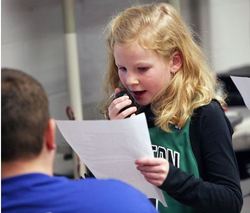
.jpg) Henri brought to the region in August.
Henri brought to the region in August.-N1YLQ-Mike-Sparky-Leger-Acushnet-MA.jpg)
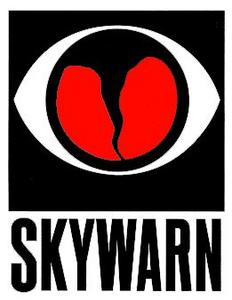 will be needed, and if additional support from Eastern Massachusetts ARES will be needed."
will be needed, and if additional support from Eastern Massachusetts ARES will be needed.".jpg) The latest episode of the On the Air podcast (Episode 22) features a discussion with Chris Plumblee, W4WF, about contesting and what this activity has to offer new amateurs.
The latest episode of the On the Air podcast (Episode 22) features a discussion with Chris Plumblee, W4WF, about contesting and what this activity has to offer new amateurs..jpg)
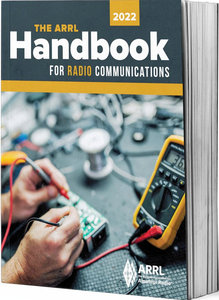 comprehensive, and complete reference is available in three formats -- traditional
comprehensive, and complete reference is available in three formats -- traditional .jpg) has brightened somewhat, and he is back at it. Hull has operated Allen's station in Whitehorse, Yukon Territory, remotely from the US to make the multiplier available.
has brightened somewhat, and he is back at it. Hull has operated Allen's station in Whitehorse, Yukon Territory, remotely from the US to make the multiplier available. check on upcoming webinars, and to view previously recorded sessions.
check on upcoming webinars, and to view previously recorded sessions..JPG) service operating in the same band in accordance with Resolution 774 (WRCâÂÂ19)."
service operating in the same band in accordance with Resolution 774 (WRCâÂÂ19)."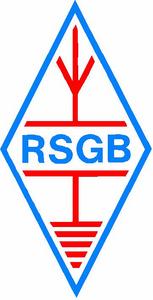 The RSGB reports the /2ZE suffix has been authorized to mark 100 years since wireless pioneers on both sides of the Atlantic, including Paul Godley, 2ZE, from the US, succeeded in copying a signal transmitted across the Atlantic and received in Scotland -- the "first successful reception of a personal message across the Atlantic by amateur radio" -- on December 12, 1921. ARRL dispatched Godley as part of the "Second Transatlantic Tests."
The RSGB reports the /2ZE suffix has been authorized to mark 100 years since wireless pioneers on both sides of the Atlantic, including Paul Godley, 2ZE, from the US, succeeded in copying a signal transmitted across the Atlantic and received in Scotland -- the "first successful reception of a personal message across the Atlantic by amateur radio" -- on December 12, 1921. ARRL dispatched Godley as part of the "Second Transatlantic Tests."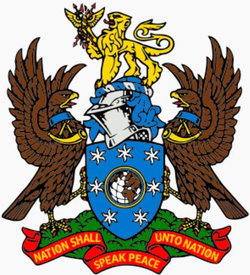 The London BBC Radio Group has been granted a year-long special event call sign, GB100BBC, to commemorate the centenary of the BBC in 2022. Operations will be carried out by individual members or groups from home stations or BBC premises.
The London BBC Radio Group has been granted a year-long special event call sign, GB100BBC, to commemorate the centenary of the BBC in 2022. Operations will be carried out by individual members or groups from home stations or BBC premises. 2009 by Florentin Bard, F4DYW, also as FT5WQ. The solo DXpedition is anticipated to cost as much as $58,000.
2009 by Florentin Bard, F4DYW, also as FT5WQ. The solo DXpedition is anticipated to cost as much as $58,000.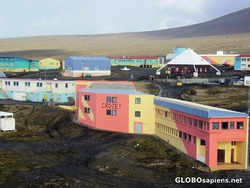 of Crozet are strongly committed to the protection of nature (fauna and flora), and the prefect's offices are faced with a significant solicitation of visitor requests."
of Crozet are strongly committed to the protection of nature (fauna and flora), and the prefect's offices are faced with a significant solicitation of visitor requests.".jpg) Lab Engineer EMC/RFI Specialist
Lab Engineer EMC/RFI Specialist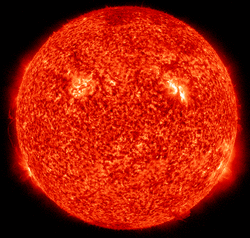 increased from 4.4 to 12, and average daily middle latitude A index went from 3.6 to 9.
increased from 4.4 to 12, and average daily middle latitude A index went from 3.6 to 9.







